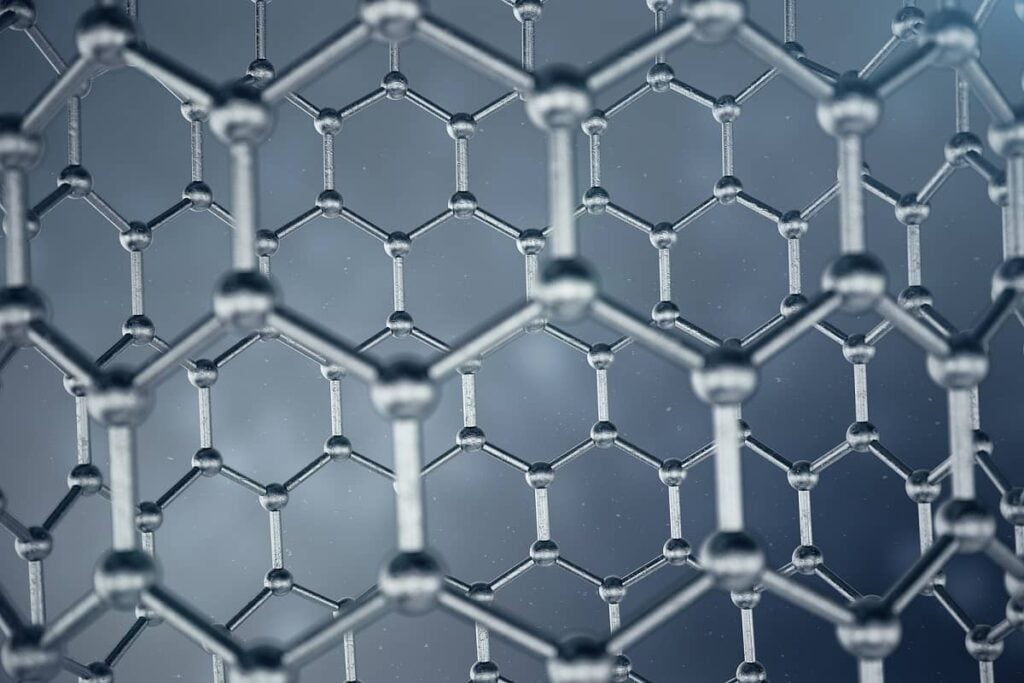Modumetal, NanoSteel, and Nano-Metals
Table of contents

Last year we spent time in the Caucasus drinking cheap wine, scouting technology startups, and trying not to offend the Azerbaijanis by speaking too highly of the Armenians. (And vice versa.) During that visit, we ended up on the nightly Azerbaijani news talking about startups. First question out of the gate, “what is a startup?” It’s a good question, and a complicated one.
A startup is a company that has taken capital from investors who expect a timely return on their investment. As investors, what time limits can we impose without interfering with progress? How long do we allow a company to continue doing R&D before we see traction? These are the sorts of questions that investors need to ask prior to making investments so that everyone is on the same page.
Take nanomaterials, for instance. Amazing-sounding materials like graphene and carbon nanotubes still haven’t achieved any sort of wide-scale commercialization. Does the same hold true for nano-metals?
Are Nano-Metals Dead on Arrival?
Back in August of 2017, Machine Design published an article titled Are Nano-Metals Dead on Arrival? which talks about how nanotechnology hasn’t been able to revolutionize the production of conventional metals. The article cautions against companies using the buzzwords and not actually altering metals at the nanometer level (that’s where the rules of physics change and we can do incredible things… or so we’ve been told). The article concludes that “poorly written standards” are one impediment keeping nano-metals from becoming widely adopted.
Since steel is one of the world’s most widely recycled materials, there is a concern about the “recyclability” of new nano-enabled metals. However, this might be a moot point. If you could create a steel guardrail that would last 30X longer than traditional steel, would recyclability matter? It’s a good question to ask, and today we’re going to look at how two companies are rising to the challenge of changing the archaic steel industry – Modumetal and NanoSteel.
Modumetal Grows Alloys and Coatings
Founded in 2007, Seattle-based Modumetal has taken in just over $65 million in funding from large oil companies like ConocoPhillips, BP Ventures, and Chevron (which is not only an investor but also a customer), and notable venture capital firms including Vulcan Capital and Founders Fund. Modumetal targets the protective coatings market which is driven by cost sensitivities and environmental regulation concerns. In 2012, Modumetal added Siemens as a customer and began a joint venture with Steel Dynamics, all the while ramping up a full production facility.
Modumetal is unique in that it grows nanolaminated alloys in tanks full of acid. Various scraps of metal are dissolved in acid and then recreated with a series of electric charges that alter the atomic structure of the metal.

Using electric charges, the metals are shaped as they grow so they conform to a mold placed inside the tank. The result is a material that outperforms steel in strength, weight, durability, and corrosion resistance. This unprecedented materials’ performance can also be extended to coatings.
For nanolaminated coatings, a similar process takes place. An item is placed in a tank containing metal ions and specialized electrical currents are then applied to bind the ions to the item. Varying degrees of currents bind specific ions allowing for a precision production process. The result is a layered structure that is applied to the item which can be visualized in the same way plywood gets formed.
Modumetal Nano-Metal Products
It’s great to see that this promising technology has resulted in some commercial products on offer from Modumetal, like the following:
- NanoGalv – commercially available surface-coating system designed for corrosive and high strength applications. Can be used as a drop‐in replacement for cadmium, a toxic substance.
- ModuGalv – designed for protecting transportation and construction infrastructure from corrosion. Performance improvements exceed traditional hot dipped galvanized materials by as much as 300%.
- Nanoplex C – designed for protecting production and completion components, including pumps and valves, from adhesive wear and aggressive corrosion.
- ModuBrass – nickel-free product designed for marine corrosion and wear resistance applications.
Also in development is Nanoplex WC, designed as a drop-in replacement for hard chrome, a toxic material, and Tungsten Carbide, a conflict mineral-containing compound. As you can see, there’s a green-tech spin to the whole thing where you can improve performance and appease the ESG types at the same time.
Like many companies we come across, Modumetal doesn’t talk a lot about what’s going on in the sparse press release section of their website. They had two funding rounds last year which means they’re probably scaling the production and sale of their various product lines. They’re not the only nano-metals company that’s making progress.
Update 02/08/2022: Modumetal has raised $14 million in Series A funding to expand its customer base by trying to break into the automotive and energy industries. This brings the company’s total funding to $95.3 million to date.
NanoSteel and Nano-Structured Steel
Founded in 2002, Rhode Island-based company NanoSteel has taken in just under $52 million in funding so far to become “the world leader in proprietary nano-structured steel material designs.” The company’s backers include names like General Motors, Porsche, and Lear Corporation, with the latest funding round of $4.1 million closing this past January.
NanoSteel takes common raw material constituents used to make conventional steel alloys and combines them in different ratios to create proprietary alloy chemistries. Only the post-production microstructure of the thermal spray coatings, weld overlays, powder metals, and sheet steels are nano-scale in size. The technology was the result of six years of research conducted at the Idaho National Laboratory (INL) which resulted in an exclusive worldwide license to the technology and material discoveries developed including more than 300 licenses, patents, and patents pending. One key area of focus for NanoSteel is the automotive industry’s need for an alternative to conventional steel.
Automotive Value Proposition
One of the problems automakers face is how to develop new materials that will reduce the weight of the automobile to meet the challenge of higher fuel economy standards without compromising safety. That’s why Advanced High-Strength Steels (AHSS) are one of the fastest-growing new materials in today’s automotive industry. NanoSteel’s AHSS steels are designed for production in conventional steel mills using existing technology and outperform conventional steels by being stronger and lighter.

For example, the company’s AHSS enabled a 30% reduction of weight in the Body-In-White structure of a 2011 Honda Accord while meeting North American performance and safety targets.
Like Modumetal, NanoSteel keeps a low profile. Developing steel alternatives for the highly-regulated automotive industry means they’ll need to conduct extensive product testing prior to commercializing AHSS. In the meantime, there are other industries they can address.
NanoSteel for Other Industries
In addition to the automotive market, NanoSteel is also successfully targeting other industry applications including:
- Oil and Gas: Introduced in 2005, Guardian® HB has been applied worldwide to more than 1,000 miles of drill pipe and has demonstrated a 300% lifetime improvement over competing materials.
- Mining: NanoSteel alloys for wear plate, wear pipe, and hardfacing applications are proven to provide up to 400% longer wear life.
- Cement: NanoSteel wear plate/coating combination has tripled the life of fan blades on centrifugal blower units and doubled the life of drum pockets on rotary vane feeder units.
- Concrete: An aluminum mixer truck chute coated with a thin wear-resistant NanoSteel alloy can be recoated without any loss to the original chute thickness and dramatically increase life span.
They also dabbled in additive manufacturing until Sept 2018 when they spun out that as a new venture – Formetrix, a “provider of innovative and high-performance metal powders for 3D Printing.”
Conclusion
If you’ve ever read about the promises of nanotechnology through the lens of visionaries like Eric Drexler, you’d be underwhelmed by the progress being made in the area of nanomaterials. Perhaps now with our machine learning capabilities and incredibly sophisticated 3D modeling programs, we can begin to design designer metals that truly take us to a new era of metallurgy. At least two companies seem to be making progress here. If your sacred cow didn’t make this list, drop us a comment below and we’ll take a look at it.
Sign up to our newsletter to get more of our great research delivered straight to your inbox!
Nanalyze Weekly includes useful insights written by our team of underpaid MBAs, research on new disruptive technology stocks flying under the radar, and summaries of our recent research. Always 100% free.

















Sounds Interesting